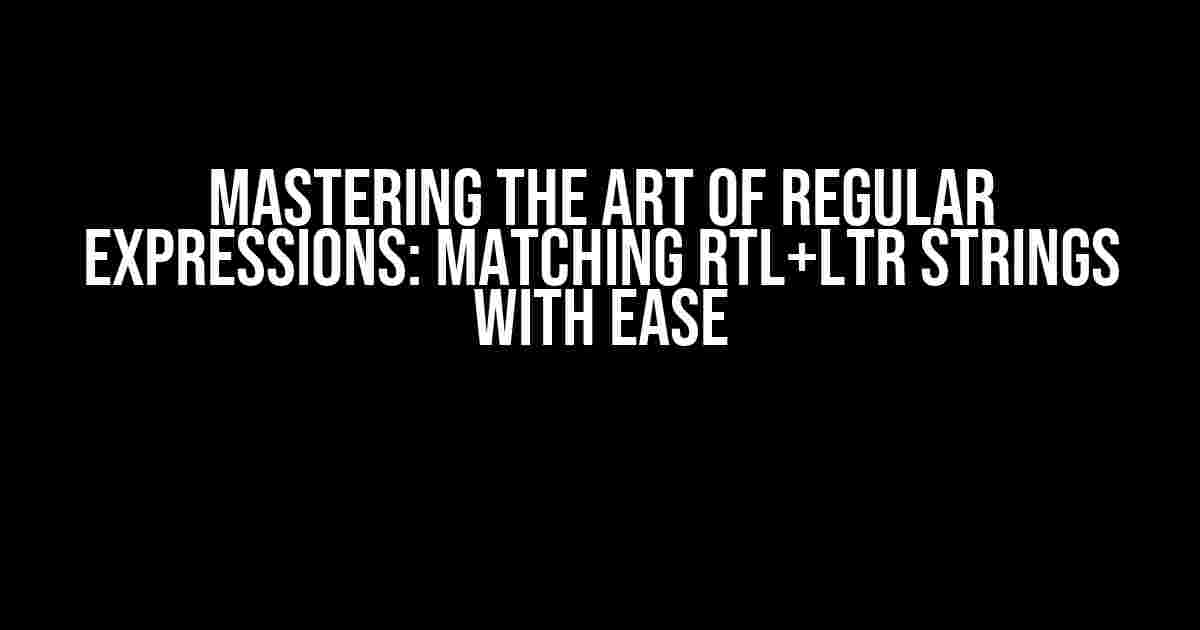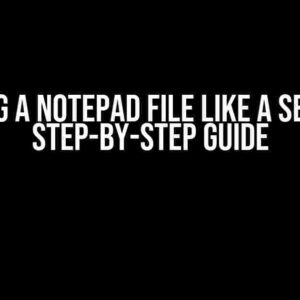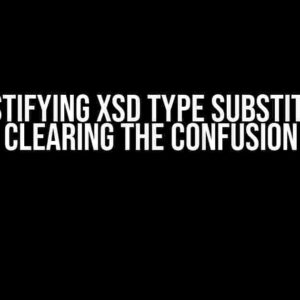Are you tired of struggling to match strings that combine both Right-to-Left (RTL) and Left-to-Right (LTR) languages? Do you find yourself lost in a sea of Unicode characters, unsure of how to craft the perfect regular expression? Fear not, dear reader, for we’re about to embark on a journey to conquer the world of RTL+LTR string matching!
What are RTL and LTR languages?
Before we dive into the world of regular expressions, let’s take a brief moment to understand the difference between RTL and LTR languages. RTL languages, such as Arabic, Hebrew, and Persian, are written from right to left. This means that the direction of the text flows from the right side of the page to the left. On the other hand, LTR languages, such as English, Spanish, and French, are written from left to right.
The Challenges of Matching RTL+LTR Strings
When dealing with strings that combine both RTL and LTR languages, things can get tricky. The Unicode standard assigns different character codes to RTL and LTR characters, making it difficult to craft a single regular expression that can match both types of languages. Furthermore, the direction of the text can affect the way characters are matched, leading to unexpected results if not handled correctly.
Regular Expression Basics for RTL+LTR Strings
Before we dive into the advanced stuff, let’s cover some basic concepts that are essential for matching RTL+LTR strings.
Unicode Character Properties
In Unicode, each character is assigned a property that determines its direction. The most relevant properties for RTL+LTR strings are:
- U+200F (RIGHT-TO-LEFT MARK): A non-breaking character that indicates the direction of the text should be RTL.
- U+200E (LEFT-TO-RIGHT MARK): A non-breaking character that indicates the direction of the text should be LTR.
- U+202B (RIGHT-TO-LEFT EMBEDDING): A character that indicates the start of an RTL embedding in an LTR string.
- U+202C (LEFT-TO-RIGHT EMBEDDING): A character that indicates the start of an LTR embedding in an RTL string.
These characters are crucial for indicating the direction of the text and can be used to create regular expressions that match RTL+LTR strings accurately.
Regular Expression Modifiers
To match RTL+LTR strings effectively, we need to use regular expression modifiers that allow us to specify the direction of the text. The most commonly used modifiers are:
- ?u (Unicode mode): Enables Unicode matching, allowing us to use Unicode character properties and code points.
- ?i (Case-insensitive mode): Makes the regular expression case-insensitive, which is useful when matching text in different languages.
By combining these modifiers, we can create regular expressions that are both Unicode-aware and case-insensitive.
Matching RTL+LTR Strings with Regular Expressions
Now that we’ve covered the basics, let’s dive into the world of regular expressions for matching RTL+LTR strings!
Matching RTL Text
To match RTL text, we can use the following regular expression:
/[\u0600-\u06FF\u0750-\u077F\u08A0-\u08FF\uFB50-\uFDCF\uFDF0-\uFDFF\uFE70-\uFEFF]+/uThis regular expression matches any Unicode character that falls within the RTL character range. Note the use of the ?u modifier to enable Unicode mode.
Matching LTR Text
To match LTR text, we can use the following regular expression:
/[a-zA-Z0-9\s]+/iThis regular expression matches any LTR character (a-z, A-Z, 0-9, or whitespace) one or more times. Note the use of the ?i modifier to enable case-insensitive mode.
Matching RTL+LTR Strings
Now, let’s create a regular expression that can match both RTL and LTR strings:
/(\u200F[\u0600-\u06FF\u0750-\u077F\u08A0-\u08FF\uFB50-\uFDCF\uFDF0-\uFDFF\uFE70-\uFEFF]+|[\u200Ea-zA-Z0-9\s]+)/uThis regular expression uses an alternation (|) to match either RTL text or LTR text. The RTL text is matched using the same regular expression as before, while the LTR text is matched using a simpler regular expression that includes whitespace characters.
Advanced Matching: Handling Bidirectional Text
In some cases, we need to match strings that contain both RTL and LTR text, but also include bidirectional characters (such as parentheses or quotes). To handle these cases, we can use the following regular expression:
/(\u200F[\u0600-\u06FF\u0750-\u077F\u08A0-\u08FF\uFB50-\uFDCF\uFDF0-\uFDFF\uFE70-\uFEFF]+|[\u200Ea-zA-Z0-9\s]+|[\u0028\u0029\u005B\u005D\u0030-\u0039])+/uThis regular expression adds an additional alternation to match bidirectional characters, such as parentheses, quotes, and digits.
Examples and Use Cases
Let’s take a look at some examples and use cases for matching RTL+LTR strings:
| Example | Regular Expression | Match |
|---|---|---|
| RTL text: “العربية” | /[\u0600-\u06FF\u0750-\u077F\u08A0-\u08FF\uFB50-\uFDCF\uFDF0-\uFDFF\uFE70-\uFEFF]+/u | Matches the entire string |
| LTR text: “Hello World!” | /[a-zA-Z0-9\s]+/i | Matches the entire string |
| RTL+LTR string: “العربية (Hello World!)” | /(\u200F[\u0600-\u06FF\u0750-\u077F\u08A0-\u08FF\uFB50-\uFDCF\uFDF0-\uFDFF\uFE70-\uFEFF]+|[\u200Ea-zA-Z0-9\s]+)/u | Matches the entire string |
| Bidirectional string: “العربية (123) [abc]” | /(\u200F[\u0600-\u06FF\u0750-\u077F\u08A0-\u08FF\uFB50-\uFDCF\uFDF0-\uFDFF\uFE70-\uFEFF]+|[\u200Ea-zA-Z0-9\s]+|[\u0028\u0029\u005B\u005D\u0030-\u0039])+/u | Matches the entire string |
These examples demonstrate the power of regular expressions in matching RTL+LTR strings. By combining Unicode character properties, regular expression modifiers, and clever patterns, we can create robust regular expressions that accurately match strings in any language.
Conclusion
In conclusion, matching RTL+LTR strings with regular expressions requires a deep understanding of Unicode character properties, regular expression modifiers, and clever patterns. By following the guidelines and examples provided in this article, you’ll be well on your way to mastering the art of regular expression matching for RTL+LTR strings. Remember to always test your regular expressions thoroughly and consider the specific requirements of your use case.
Happy coding, and may your regular expressions be ever-matching!
Frequently Asked Question
Get answers to your most pressing questions about regular expressions to match RTL+LTR strings!
What is the significance of matching RTL+LTR strings using regular expressions?
Matching RTL+LTR strings using regular expressions is crucial in handling multilingual text data, especially when dealing with languages that have different writing directions, such as Arabic, Hebrew, and Persian. It ensures accurate text processing, prevents data corruption, and enables effective searching and sorting of text data.
How do I match RTL strings using regular expressions?
To match RTL strings, you can use Unicode property escapes, such as `\p{RTL}` or `\p{Script=Hebrew}`, to match characters with specific properties. For example, the regex pattern `[\p{RTL}\p{Script=Arabic}]+` matches one or more characters that have the RTL property or belong to the Arabic script.
Can I use regular expressions to match LTR strings only?
Yes, you can use regular expressions to match LTR strings only by using Unicode property escapes, such as `\p{LTR}` or `\p{Script=Latin}`, to match characters with specific properties. For example, the regex pattern `[\p{LTR}\p{Script=Latin}]+` matches one or more characters that have the LTR property or belong to the Latin script.
How do I handle mixed RTL and LTR strings using regular expressions?
To handle mixed RTL and LTR strings, you can use a combination of Unicode property escapes and character classes. For example, the regex pattern `[\p{LTR}\p{Script=Latin}]+|[\p{RTL}\p{Script=Arabic}]+` matches either one or more LTR characters or one or more RTL characters.
Are there any regex flavors that support RTL and LTR matching out of the box?
While there isn’t a single regex flavor that supports RTL and LTR matching out of the box, some flavors like PCRE, .NET, and Java provide built-in support for Unicode property escapes, which can be used to match RTL and LTR strings. However, it’s essential to check the specific regex flavor and its version to ensure it supports the required Unicode properties.




